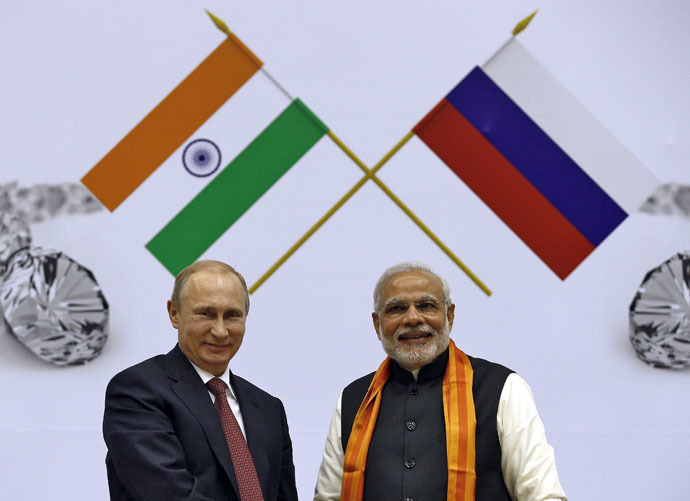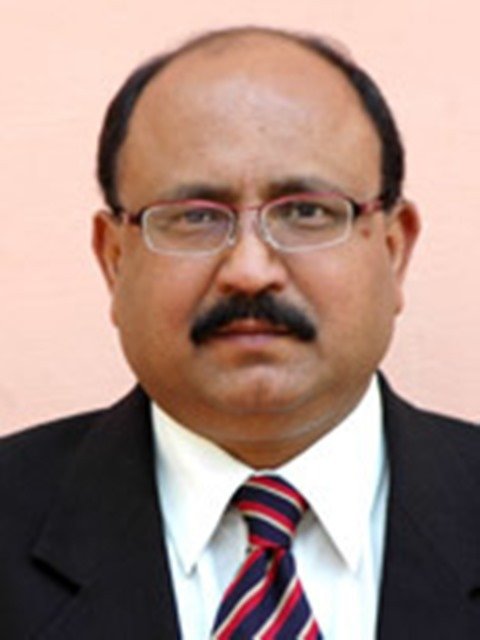How diamond diplomacy adds sparkle to Indo-Russian ties

Direct trade between India and Russia in rough diamonds is a diplomacy gem which was a Russian initiative buttressed by some quick decision-making by Prime Minister Narendra Modi.
The matter has been under discussion through the diplomatic channels between the two countries for quite some time and came up in a brief discussion between visiting Russian President Vladimir Putin and Modi during the 15th India-Russian annual summit in New Delhi on 11 December.
Barely a few hours after the summit, twelve Indian companies signed three-year contracts worth $2.1 billion aimed at buying rough diamonds directly from Russian diamond miner Alrosa. The contracts were signed during the World Diamond Conference, the first conference of its kind in the world, which was opened jointly by Modi and Putin.
The diamond diplomacy between India and Russia is a win-win situation for both the sides as even though there has not been direct diamond trading between them despite the fact that Russia is the world’s largest producer of diamonds and India is the world’s biggest manufacturing centre for cut and polished diamonds. Here is why.
Firstly, the Russians came around and decided to have direct trade in diamonds because of the latest geopolitical factors.
Moscow has been hemmed in by the US-led Western community which has imposed severe sanctions on Russia. Therefore, Russia is turning away from the American and European markets and is increasingly focusing on Asia. For this reason, Russia has justifiably turned to China and India.
Second, the diamond diplomacy will give a much needed lift to B2B ties and involve the private sector in a big way. Indo-Russian bilateral trade has remained stuck on $10 billion and has been steadily going down in recent years despite the best political relations between the two countries, and the reason is that there has hardly been any direct trade between the companies of the two countries although the two governments tried their best to encourage it.
Three, the diamond diplomacy will fill up the coffers of diamond companies of both countries by eliminating middle men and commission agents. Besides, it will also give a new lease of life to the Indian diamond trade and generate employment in big numbers.
Four, the move will give a huge boost to the Indian diamond industry given the fact that the country today exports cut and polished diamond worth US$ 20 billion.
Surat, a city in Gujarat, has emerged as the biggest center in the world for cutting and polishing diamonds. It hosts enterprises with some of the most advanced technologies and machinery in the world.

India is the world's largest centre for cutting and polishing diamond and its largest importer of uncut diamond. Thus, the diamond industry is also a great source of jobs in India. This point was stressed by Modi in his speech at the World Diamond Conference when he pointed out that the gem and jewels sector in India employs nearly 3.5 million people of which one million work in the diamond industry alone.
Out of ten polished diamond pieces sold globally, nine are processed in India. “The diamonds sparkle in the world because of the skills of Indian workers,” Modi remarked.
A pertinent bit of trivia in this context is that although the Bharat Diamond Bourse was established in 2010, it has become the world's largest exchange in the world.
So far rough diamonds have been reaching India from abroad, mostly indirectly through places like Antwerp and Dubai. Most of the rough diamonds that reach India come from Russia but largely indirectly. Less than 20 per cent of diamonds come directly to India.
Though trade in Antwerp is now run mainly by Indians, it has not been an ideal situation for India. With the successful Indo-Russian diplomacy, this will change forever - and for the better for both the countries.
While Moscow took the initiative in diamond diplomacy, Modi sweetened the deal for Russia further. He made three proposals to Putin.
“I have made three proposals to President Putin. First, I would like Alrosa to have direct long-term contracts with more Indian companies. I am pleased to know that they are moving in that direction,” Modi told the World Diamond Conference.
“Second, I want Alrosa and others to trade directly on our bourse. We have decided to create a Special Notified Zone, in which major mining companies can import rough diamonds on a consignment basis and re-export unsold ones. This is going to benefit Indian diamond industry and create more jobs for our youth.”
“Third, I asked President Putin to reform regulations so that Russian jewelry makers can send their rough diamond to India and re-import polished diamond without paying duty. This will give a boost to our diamond industry. These measures will also boost India-Russia economic ties.”
Clearly, the focus will now be on how the Special Notified Zone (SNZ) for diamonds would perform. Good performance would inevitably lead to more SNZs created in India for many other areas.
The statements, views and opinions expressed in this column are solely those of the author and do not necessarily represent those of RT.
The statements, views and opinions expressed in this column are solely those of the author and do not necessarily represent those of RT.













